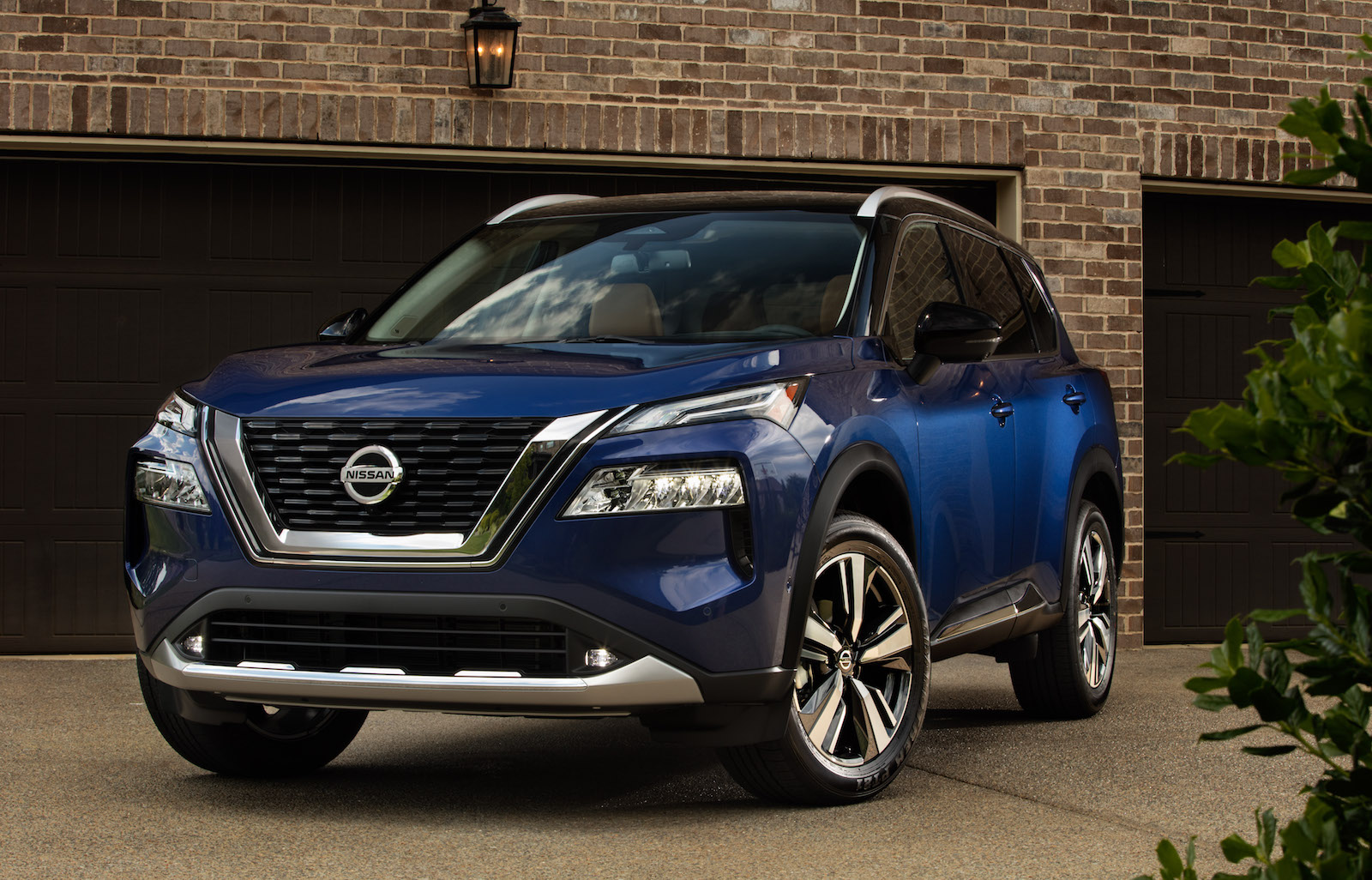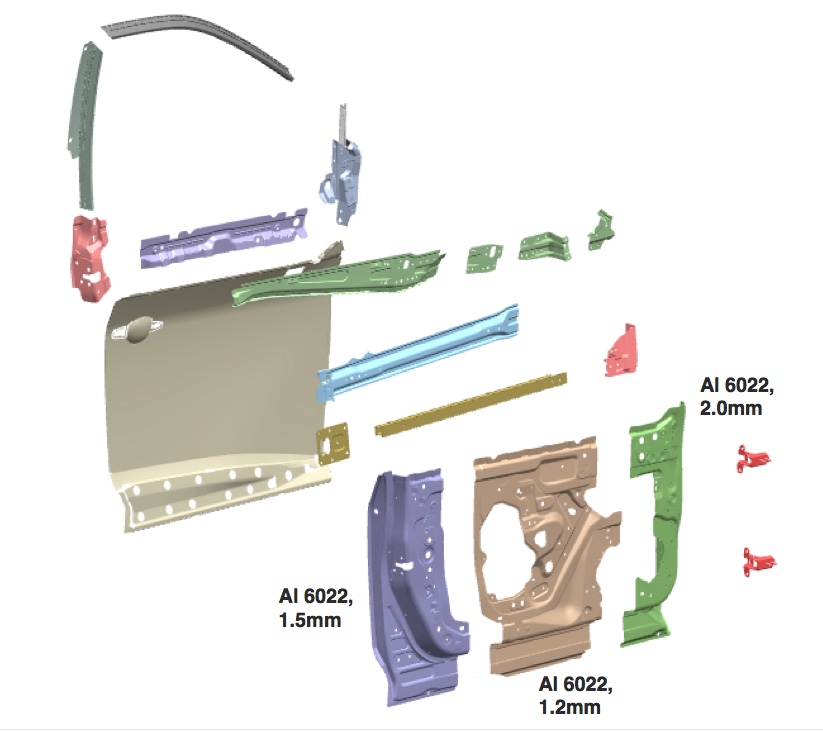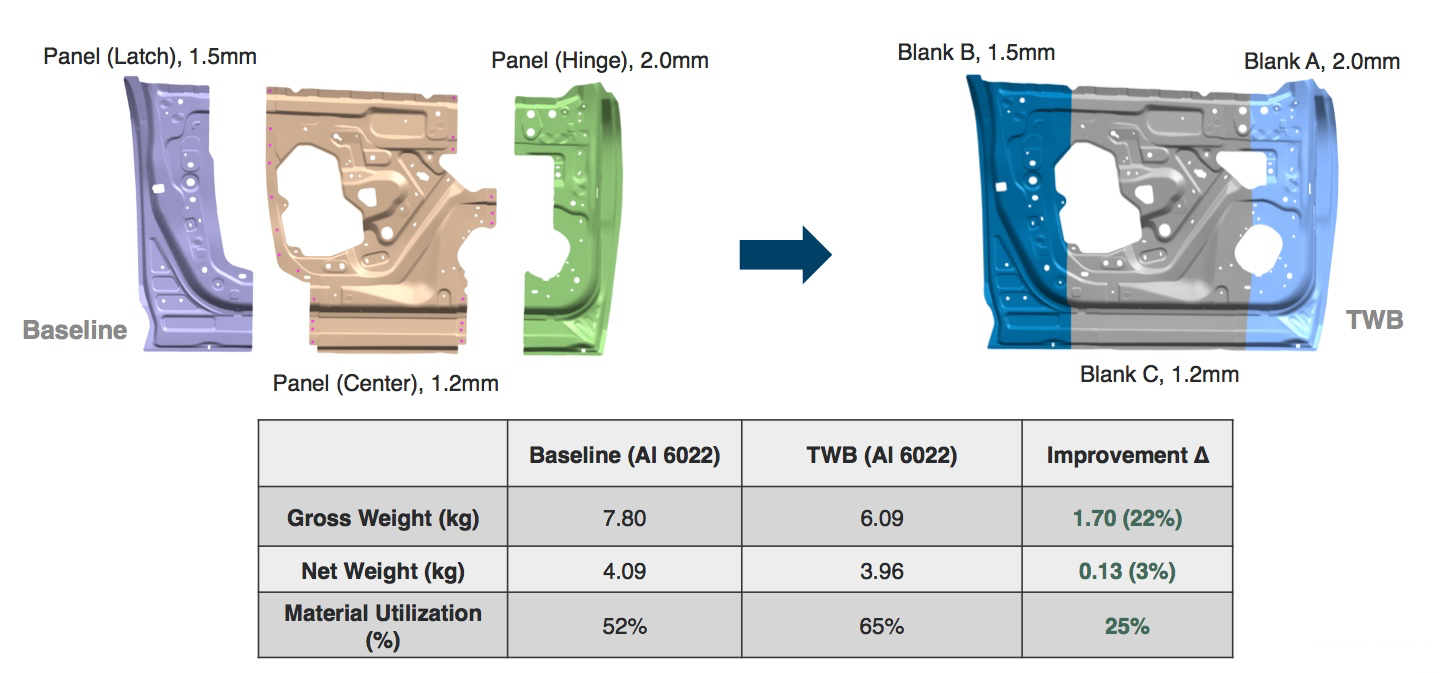By Andrew Halonen, Mayflower Consulting LLC.
In automotive engineering, material selection is not a static activity. A decision made on today’s model could be reversed on the next one. This can be good or bad depending on one’s perspective. Materials manufacturers are continually innovating and bringing robust solutions to the market, providing vehicle OEMs with a variety of options. The OEMs need access to these options as they juggle all the attributes of a competitive vehicle design, from the powertrain to aerodynamics, vehicle efficiency, and styling. Integrating thousands of components within a vehicle to ensure its best performance is no small feat, but this, combined with marketing, sales, and service, is what makes a profit for shareholders.
Cost reduction is always in season, especially if there is minimal change to the supply chain and the assembly plant. In order to reduce component and manufacturing costs in automotive, TWB Company, LLC, based in Monroe, MI, developed tailor-welded blanks that are able to meet the strict requirements of the automotive industry. The company introduced aluminum tailor-welded blanks in 2014 for use in closure parts, such as hoods, fenders, doors, and even complete bodies. With the increased interest in lightweighting and sustainability in automotive, TWB believes that this innovation in aluminum tailor-welded blanks is poised to reduce weight, tooling cost, and substantial piece cost. In order to highlight the potential of aluminum tailor-welded blanks in vehicle design, TWB developed a concept door for the Nissan Rogue (Figure 1), which is presented in this article.

Tailor-Welded Blanks
Tailor-welded blanks are metal sheet products developed for the stamping process, which is commonly used in automotive. The blanks are comprised of individual metal sheets of different thickness, strength, and coating that are joined together via welding. As a result, the final welded sheet will likely be thicker on one side or the other. This allows for the right forming and mechanical properties to be designed in the right place for the component. The ability to tailor the product also leads to the economic efficiency of the final product.
For aluminum tailor-welded blanks, TWB uses friction stir welding (a technology that is becoming increasingly popular) for high volume manufacturing of 6000 series alloys. Friction stir welding yields speeds up to 6 m/min and can join together sheets as thin as 1 mm. This technology is applicable to curvilinear welding and joining of all the common automotive aluminum alloys and mixed alloys.
The company can also join 5000 series aluminum with laser welding. They can produce tailor-welded blanks using either laser or friction stir welding, depending upon the alloy, thickness, and application. The tailor-welded blanks are available in either a flat shape or a coil.
“Tailor-welded blanks allow for thickness variation in a single blank, giving the designer freedom to add strength and stiffness where it is needed,” said Saambavi Karunakaran, product engineer working in New Product Development at TWB Company.1 “Implementing this technology during the design phase reduces upfront capital investments and cycle times. It also reduces scrap rates compared to monolithic blanks without performance degradation. Improved material utilization can be achieved by using optimal gauge, grade, and blank shape to meet the required performance. Other benefits of tailor-welded blanks are cost and mass savings, part consolidation, and reduction of assembly operations.”
Nissan Rogue Door Concept
At the International Automotive Body Congress in Livonia, MI in Fall 2022,2 Karunakaran presented a compelling front door concept using the Nissan Rogue SUV as the baseline. The current Rogue door inner (meaning the inside panel) is made of three pieces of 6022 aluminum sheet of various thicknesses, comprising 75% of the door inner (Figure 2). The design also includes an aluminum extrusion, steel hinges, and a small amount of plastic. The current door design is produced by overlapping the edges of adjacent pieces and riveting them together.

The goal of the study was to convert the original three-piece aluminum design to one that used a single tailor-welded blank that meets or exceeds the performance of the baseline design. From a laymen’s perspective, the TWB solution is easy—simply, reduce the size of each piece by designing a welded blank that can be stamped as a single piece, thus eliminating the overlap. However, the process of developing this tailor-welded blank is far from simple, as door engineering is quite complicated and there are many considerations relative to stamping, structural strength, formability, durability, noise and vibration reduction, and ease of manufacturing. In addition, the door is both a safety critical part (needing to protect the passenger in the case of a side impact), as well as being a component with significant customer interaction. Therefore, only sound engineering will do.
Engineering and Design
The TWB team maximized the use of computer-aided engineering (CAE) to design, analyze, and optimize the door solution. During the congress, Karunakaran presented the tailor-welded inner door solution along with a comparison of this concept with the baseline inner door (Figure 3). In addition, TWB performed an analysis on the tailor-welded door inner design, considering the door sag, over opening, beltline stiffness, and torsional stiffness.2 In every criteria, the tailor-welded design met the required parameters and performance of the baseline design.

After seeing that the tailor-welded design concept met the structural and modal analysis criteria, the TWB team performed a CAE analysis regarding the manufacturing process for the design. The goal was to present the stamping partner with a formable and wrinkle-free part, as far as the CAE tools can estimate. Ensuring formability and a wrinkle-free product began with the weld seam design, assuming a 12 mm wide area of the weld using the friction stir welding process.
Cost and Weight Reduction
According to the presentation, the tailor-welded design concept is better than the baseline design in regards to weight, tooling, and piece cost.2 The tailor-welded concept results in a 22% gross aluminum reduction, saving approximately 610 tonnes of aluminum annually. The concept also avoids 1,160 tonnes CO2, based on EPA figures of 1.9 kg CO2/kg Al produced.
By combining multiple components into a single tailor-welded design, the concept is lighter weight than the baseline, providing a 0.26 kg on-vehicle mass savings per vehicle (for the front doors). In addition, the front door inner concept provides a cost savings of $4-6 per vehicle, depending on material grade and the modified design. The concept design also eliminates several stamping dies and assembly operations, providing a die tooling investment savings of $720,000.
With all the pain in the market due to inflation and supply chain constraints, the biggest gain for the tailor-welded concept is clearly the cost savings benefits per vehicle, especially considering that this nominal $5/vehicle only includes the front doors. Add the rear doors to this solution, along with weight and tooling savings, and the business case is compelling.
Future Doors
Alumobility studied aluminum doors compared to steel and presented several iterations that offered weight reduction at attractive cost premiums.3 This study from TWB now provides additional metrics in cost and weight that are appealing to a growth in aluminum doors. However, the market isn’t stagnant and the outside cost pressures on OEMs—from inflation to extreme rising battery material costs in electric vehicles—puts the business case of steel versus aluminum always in question. The aluminum market must control what it can, which is to keep laser-focus on the customer’s need and on innovations that deliver value. The TWB team did good work in material utilization for meaningful cost reductions that will likely enable more aluminum doors and closures.
References
- Personal emails with Saambavi Karunakaran, TWB Company, November 2022.
- Karunakaran, Saambavi, “Aluminum Tailor-welded Blanks, Nissan Door Study,” International Automotive Body Congress, Livonia, MI, September 29, 2022.
- Halonen, Andrew, “Alumobility Introduces a New Generation of Aluminum Doors,” Light Metal Age, August 2021.
 Andrew Halonen is president of Mayflower Consulting, LLC, a lightweighting consultancy that provides strategic marketing, market research, and business development for high tech clients. Halonen works with castings, extrusions, brakes, and new material development programs, and is a guest writer for Light Metal Age. Contact him at: www.lightweighting.co.
Andrew Halonen is president of Mayflower Consulting, LLC, a lightweighting consultancy that provides strategic marketing, market research, and business development for high tech clients. Halonen works with castings, extrusions, brakes, and new material development programs, and is a guest writer for Light Metal Age. Contact him at: www.lightweighting.co.
Editor’s Note: This article first appeared in the December 2022 issue of Light Metal Age. To receive the current issue, please subscribe.
